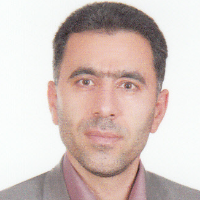Hiding body matters in the poem of Khosrow and Shirin Nezami
Absence as an inherent feature of language has two levels. The first level, the absence in the normal level of language and the second level, the double absence which is related to literature. By using rhetorical techniques and tricks, poets use some themes either to create beauty or because of the moral limitations they place on themselves or the moral and political prohibitions and controls that exist in the society. They take absent. Nizami is one of the poets who skillfully, according to the content of his romantic poems, has used absence from the simplest level to the most forbidden form to represent the physical matter in his poetry. The statistical population of the present research is Khosrow and Shirin Nizami, in which the verses which the physical aspect is absent, They have been collected in a library manner and have been analyzed by analytical-descriptive method and using the content analysis technique, then they have been classified based on the epistemic-behavioral domains used by the poet. In the following, it is clear that the poet has used fifteen cognitive-behavioral domains. The highest frequency of verses has the absence of unquoted matters and taboo matters related to agriculture with 25% and stones and precious stones with 15% of all verses. Among the fields used, the fields of horse riding and spices and food have the lowest frequency of verses with 2% of the total number of second and third level verses.
Khosrow , Shirin , Nizami , Absence , Physical matters , Physical taboos
-
An Analysis of the Folk Kurdish Tale of "Pir-e-Kharkan" with Emphasis on the Approach of Ecofeminism
Mahsa Nosrati *, Mohammad Khosravi Shakib,
Journal of Kurdish Literature, -
The management of sages and ethics in the political thoughts of Ferdowsi and Saadi and its reflection in the illustrated manuscripts of Shahnameh and Bostan Mahfouz in Cairo Museum
Alireza Mousapour, *, , Mahdi Zolfaqhari
Islamic Art Studies, -
1. Representations of Mythological Rituals and Actions in Kurdish Oral Narratives
Shahnaz Tahmasbi, *, Ali Heydari
Journal of Kurdish Literature,




